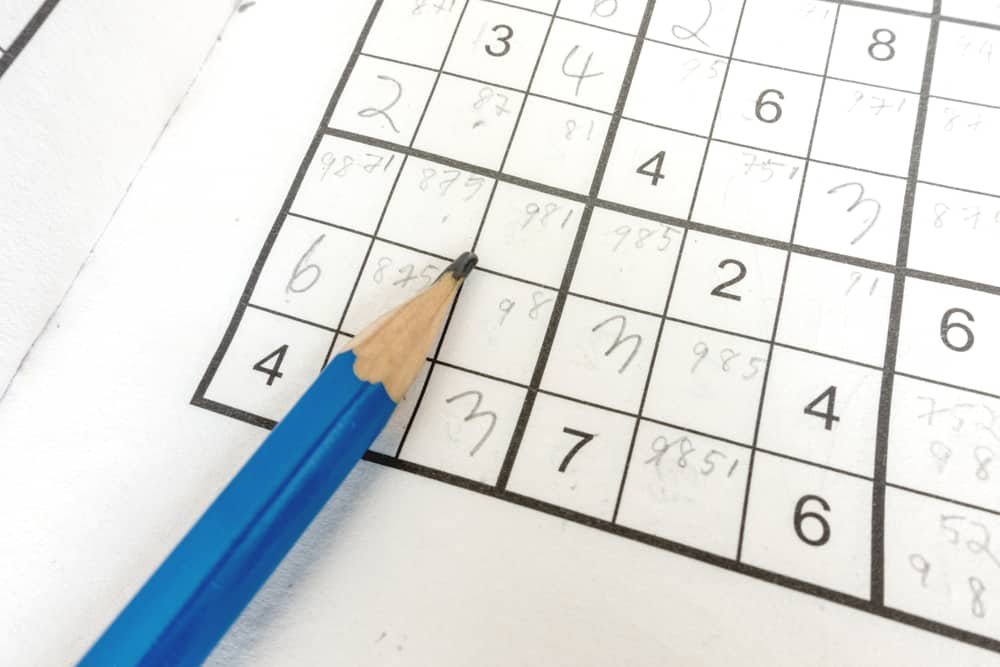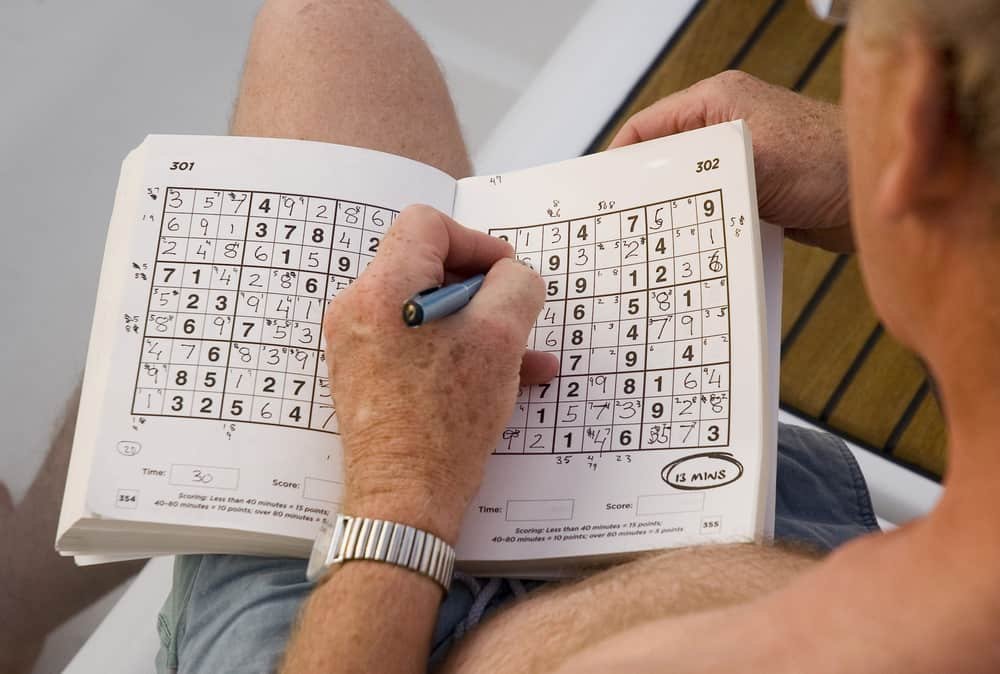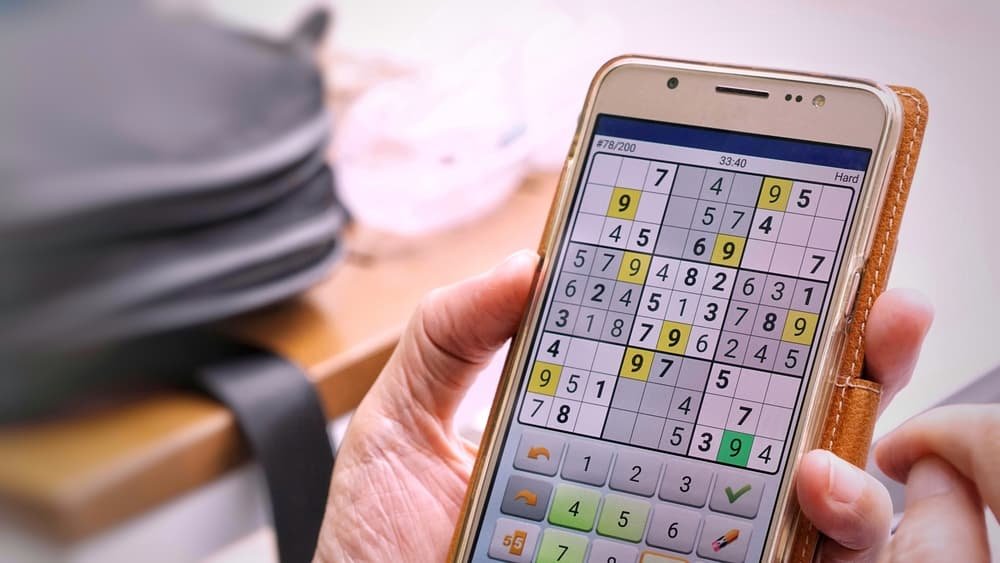Last Updated on January 7, 2024 by Gamesver Team and JC Franco

If your interest in Sudoku has been recently sparked, you probably want to get started soon. What appears to be a complex mathematics game is actually a logic based game that is a lot easier than you think – when you know what to do.
Starting out as a Sudoku beginner doesn’t have to be a headache. In fact, it can be a highly rewarding experience that leaves you with a sense of achievement.
Playing Sudoku requires minimal mathematical or scientific knowledge. Once a beginner player understands the objective of the game and learns a few of the techniques in figuring out the solution, the game is one merely of logic. It requires logical thinking, patience, and an organized mindset.
With that being said, we’ll take a closer look at 20 must-know Sudoku tips and tricks to help beginners get started and play Sudoku the right way.
These are 20 must-know Sudoku tips and tricks for beginners:

1. Familiarize yourself with the rules.
2. Start small.
Beginners cannot start playing Sudoku on just any level. All Sudoku World Champions had to start somewhere, and that is usually with the easiest puzzle. You will find that the game includes various levels of difficulty. Beginner players should start with the most basic puzzles, and stick with them until they are comfortable with the process and techniques of puzzle solving. You can download a few beginners Sudoku puzzles online, or get a Sudoku exercise book to practice with – they usually have a beginner’s publication or section.
3. Keep progressing.
It’s important not to stagnate when you start playing Sudoku. As you begin finding the easy puzzles quick and straightforward to solve, start looking for puzzles a little more complicated. As each difficulty level becomes easier for you, keep progressing. This is a great way to train the brain and ensure that it remains sharp and active.

4. Work on the easiest sections first.
Beginners stand to benefit from starting with the easiest play. Within the main Sudoku grid, there are sub-grids with some numbers already provided as clues. Some grids will have more numbers than others. If there’s a grid that looks easier to start with, go for it. It is all a process of trial and error anyway, so if you do something wrong, you can always start over. You can start by adding numbers where it seems the most obvious fit.
5. Work with a pencil & eraser.
6. Apply what you know to figure out what you don’t.
Apply what you know to figure out what you don’t is called “process of elimination.” If a grid has numbers 1, 2, 4, 5, 6, 8 – this is what you know. Now you can easily tell that the numbers 3, 7, and 9 are missing. These are the numbers required to complete that grid. This might not help you to know which blocks each of these missing numbers belongs in, but it can help you to quickly narrow things down.

7. Adopt an approach of searching for missing digits.
Scrutinize the entire Sudoku grid and sub-grids and look for which numbers are missing in each subgrid, row, and column. Knowing what is missing in each grid can help you to place numbers in the correct blank blocks.
8. Use the cross-hatching technique.
As a beginner Sudoku player, cross-hatching can be a very useful tool and technique for solving the puzzle. Cross-hatching is a process of cross-referencing rows and columns to find out which of the remaining numbers is most unique to that particular grid. Doing this also helps you to remain aware of all the numbers that you are placing in the empty blocks.
9. Avoid guessing.
Sudoku is a game of logical thinking and organizing. There should little to no guesswork involved. If you guess where a number should be placed, it could affect the rest of your puzzle and even make it impossible to solve. The only time you should place a number in a block is when you have taken the time to weigh up the evidence that you have and can make an educated, logical decision.
10. Take your time to figure it out.

When you are new to Sudoku, there is no need to rush through the problem-solving process. The more you rush, the more flustered you will be, and that is when mistakes easily happen. While you are learning various Sudoku techniques, you are actually training your brain. Take it easy in the beginning and give your brain time to adjust, learn, and strengthen its skills.
11. Use a “one pass” approach.
One pass is a process where a player scans the grid and finds where a number cannot be filled in. Once you know where a number cannot be placed, it’s far easier to narrow down where it can be. Often this method results in puzzles being solved very quickly.
12. Brush up on knowledge of Sudoku tricks.
There are tricks to playing Sudoku that many advanced players make use of. You don’t need to use these tricks from the very start, but reading and learning about them will make them easier to apply once you are comfortable and confident with the game. Naked pairs and singles are two tricks used by Sudoku players.
13. Keep the momentum of the game fluid.
In a game of Sudoku, players should not get stuck on one block or sub-grid. The game must keep moving from cell to cell, fluidly. You can practice thinking quickly and acting quickly on decisions, to keep the momentum of the game fluid.

14. Practice patience.
You cannot expect to be a Sudoku pro overnight. It takes time and practice to learn all the skills and techniques required to get ahead in the game. One thing all Sudoku pros have is spans of patience. If you aren’t a patient person, practice patience-enhancing techniques, or meditate. It will do your Sudoku game wonders.
15. Re-evaluate each number placement.
Every number that you fill into a blank box will have an effect on the blocks you fill in next. If you think that you are making a mistake, quickly re-evaluate your last few number placements. Reconsider your options before playing another potentially wrong number.
16. Keep practicing.
It might take a few games before you become hooked on Sudoku. It also might not seem as easy as you hoped when you first get started. Make sure that you take the time to practice as much as possible. The more you practice, the easier the game will get, and the more you will end up wanting to play.
17. Don’t be scared to ask for clues.

In some online Sudoku games and applications for beginner players, there are additional clues and hints provided. Unfortunately, this is not the case in printed Sudoku puzzles. While you are learning, don’t be afraid to ask for a few extra clues and hints when you don’t feel you are progressing. Just don’t use this as a cop-out excuse.
18. Set a timer.
This might seem opposite to “take your time,” but as you play more and more and start learning new skills and techniques, you are going to want to increase your speed. Make sure that you set a timer according to what is considered a decent amount of time to complete a puzzle of your selected difficulty level.
19. Try different variations of Sudoku.
There are many different versions of Sudoku. Everyone is unique and has a different set of preferences. There are many different variations of Sudoku for you to investigate. Some of the most popular variations include X-Sudoku, Wordoku, Samurai Sudoku, and Jigsaw Sudoku.
20. Don’t give up.
If Sudoku seems hard at first, understand that it is entirely normal as your brain learns something new. Don’t give up. Keep practicing, and soon, it will come naturally.
Last Word
Are you ready to get started with Sudoku? Use the tips above to get started with Sudoku the right way.

